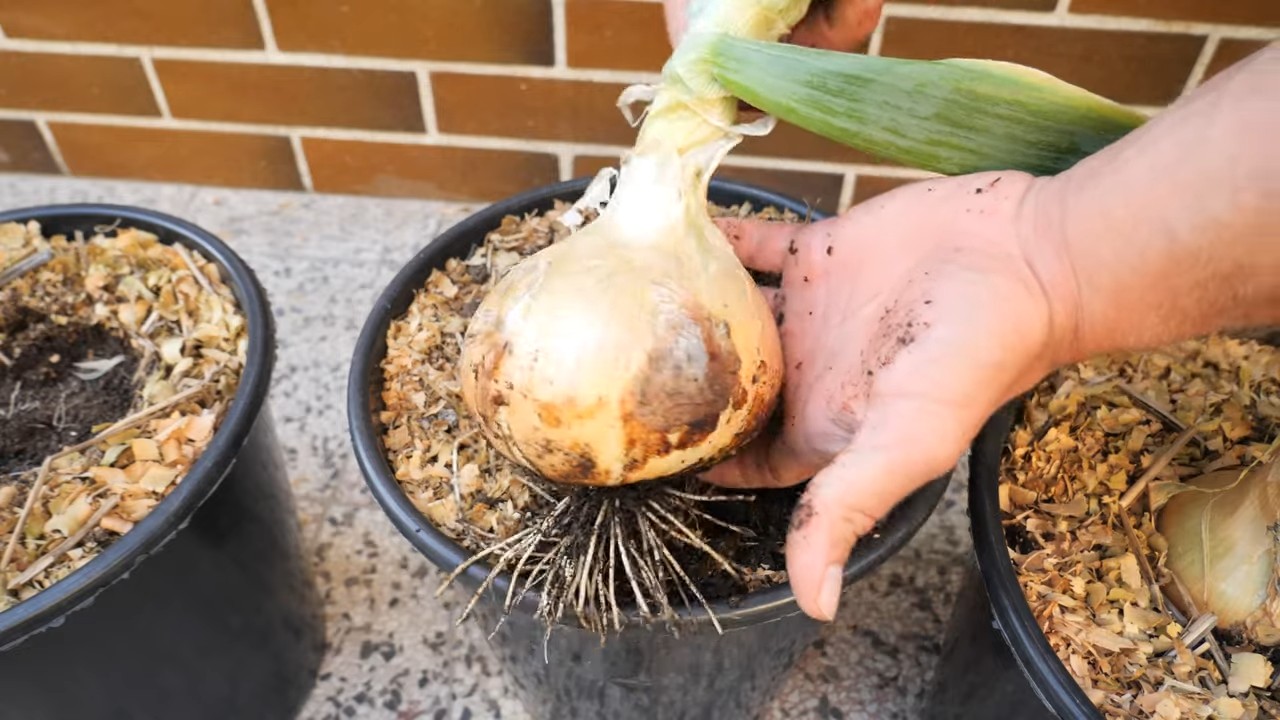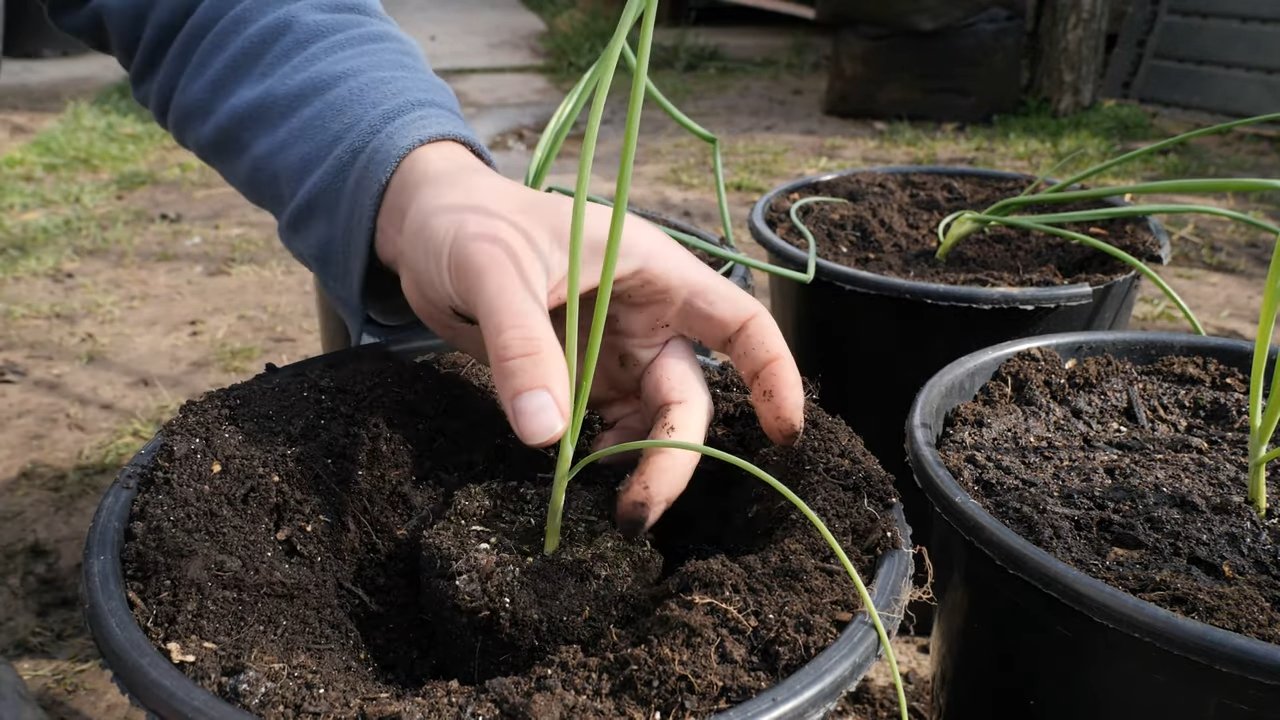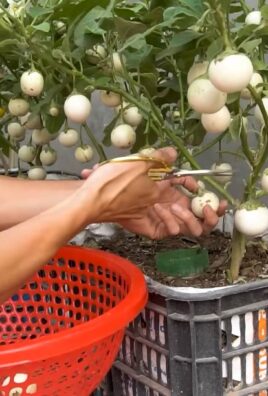Onion growing in pots might sound like a challenge reserved for seasoned gardeners, but trust me, it’s a surprisingly simple and rewarding DIY project that anyone can tackle! Imagine stepping outside your kitchen door and snipping fresh, flavorful onion greens to add a zing to your salad or a subtle depth to your favorite soup. That’s the magic we’re unlocking today!
For centuries, onions have been a staple in cuisines around the world, revered not only for their culinary versatility but also for their purported medicinal properties. From ancient Egypt, where they were even used as offerings to the gods, to the bustling markets of modern-day India, onions have held a place of honor in human history. Now, you can bring that rich heritage right to your own home, no matter how small your space.
Why should you try onion growing in pots? Well, for starters, it’s incredibly convenient. No sprawling garden required! Plus, it’s a fantastic way to reduce your grocery bills and enjoy the unparalleled taste of homegrown produce. But perhaps the biggest reason is the sheer satisfaction of nurturing something from a tiny seed or bulb to a thriving plant. In this article, I’ll share my favorite DIY tricks and hacks to ensure your potted onions flourish, even if you’re a complete beginner. Get ready to unleash your inner gardener and experience the joy of harvesting your own delicious onions!

Growing Onions in Pots: A Beginner’s Guide to Bountiful Bulbs
Hey there, fellow gardening enthusiasts! Ever thought about growing your own onions but felt limited by space? Well, I’m here to tell you that you absolutely can cultivate these flavorful bulbs right in pots! It’s easier than you might think, and the satisfaction of harvesting your own onions is truly rewarding. I’ve been growing onions in containers for a few years now, and I’m excited to share my tips and tricks with you. Let’s get started!
Choosing the Right Onion Variety
First things first, not all onions are created equal when it comes to container gardening. Some varieties are better suited for pots than others. Here’s what I’ve learned:
* Short-day onions: These are ideal for warmer climates (like the Southern US) and tend to mature faster. Think varieties like ‘White Bermuda’ or ‘Yellow Granex’.
* Intermediate-day onions: These are a good middle ground, suitable for areas with moderate climates. ‘Candy’ is a popular choice.
* Long-day onions: These need longer daylight hours and are best for northern regions. ‘Walla Walla Sweet’ and ‘Yellow Spanish’ are great options.
Important Note: Check your local climate and choose a variety that’s appropriate for your region. Your local nursery can be a great resource for this!
Gathering Your Supplies
Before we dive into the planting process, let’s make sure you have everything you need. Here’s a checklist:
* Pots: Choose pots that are at least 8-10 inches deep and wide. Onions need room for their roots to develop. I prefer using terracotta pots because they allow for better drainage, but plastic pots work just fine too.
* Potting Mix: This is crucial! Don’t use garden soil, as it can compact in pots and hinder drainage. Opt for a high-quality, well-draining potting mix. I like to add some compost to my potting mix for extra nutrients.
* Onion Sets or Seedlings: You can start onions from seeds, but it takes longer. Onion sets (small, immature bulbs) are much easier and faster. You can also purchase onion seedlings from a nursery.
* Fertilizer: Onions are heavy feeders, so you’ll need a balanced fertilizer (like 10-10-10) or an organic fertilizer specifically formulated for vegetables.
* Watering Can or Hose: For watering your onions.
* Trowel or Small Shovel: For planting.
* Gardening Gloves: To keep your hands clean.
Planting Your Onions
Now for the fun part! Here’s how to plant your onions in pots:
1. Prepare the Pot: Fill your pot with potting mix, leaving about an inch or two of space at the top.
2. Plant the Sets or Seedlings:
* Sets: Make a small hole in the soil about 1-2 inches deep. Place the onion set in the hole with the root end facing down and the pointed end facing up. Cover with soil, leaving the very tip of the set exposed.
* Seedlings: Gently remove the seedlings from their container. Make a hole in the soil deep enough to accommodate the roots. Place the seedling in the hole and cover with soil, making sure the base of the plant is at the same level as it was in the original container.
3. Space Them Out: Space the onion sets or seedlings about 3-4 inches apart. This will give them enough room to grow. You can plant multiple onions in a single pot, depending on the size of the pot.
4. Water Thoroughly: After planting, water the onions thoroughly until the water drains out of the bottom of the pot. This will help settle the soil and encourage root growth.
Caring for Your Potted Onions
Once your onions are planted, it’s important to provide them with the right care to ensure a successful harvest.
1. Sunlight: Onions need at least 6-8 hours of sunlight per day. Place your pots in a sunny location, such as a patio, balcony, or windowsill. If you don’t have enough natural sunlight, you can supplement with grow lights.
2. Watering: Water your onions regularly, especially during dry periods. The soil should be consistently moist but not waterlogged. Check the soil moisture by sticking your finger into the soil. If the top inch feels dry, it’s time to water.
3. Fertilizing: As I mentioned earlier, onions are heavy feeders. Fertilize them every 2-3 weeks with a balanced fertilizer or an organic fertilizer specifically formulated for vegetables. Follow the instructions on the fertilizer package. I like to use a liquid fertilizer diluted in water for easy application.
4. Weeding: Keep your pots free of weeds. Weeds can compete with your onions for nutrients and water. Hand-pull any weeds that appear.
5. Pest and Disease Control: Onions can be susceptible to certain pests and diseases, such as onion maggots and fungal diseases. Inspect your plants regularly for any signs of problems. If you notice any pests or diseases, treat them promptly with an appropriate insecticide or fungicide. I prefer to use organic pest control methods whenever possible. Neem oil is a great option for controlling many common garden pests.
6. Mulching (Optional): Adding a layer of mulch around your onions can help retain moisture, suppress weeds, and regulate soil temperature. I like to use straw or shredded leaves as mulch.
Harvesting Your Onions
The moment you’ve been waiting for! Here’s how to know when your onions are ready to harvest:
1. Timing: Onions typically take 90-120 days to mature, depending on the variety.
2. Signs of Maturity: The tops of the onions will start to turn yellow and fall over. This is a sign that the bulbs are mature and ready to harvest.
3. Harvesting: Gently loosen the soil around the onions with a trowel. Carefully pull the onions out of the soil.
4. Curing: After harvesting, cure the onions by laying them out in a warm, dry, well-ventilated place for 1-2 weeks. This will help them develop a papery outer skin and prevent them from rotting.
5. Storage: Once the onions are cured, you can store them in a cool, dry, dark place for several months. I like to store mine in mesh bags or old pantyhose.
Troubleshooting Common Problems
Even with the best care, you might encounter some problems while growing onions in pots. Here are a few common issues and how to address them:
* Yellowing Leaves: This could be a sign of overwatering, underwatering, or nutrient deficiency. Check the soil moisture and adjust your watering accordingly. Fertilize your onions with a balanced fertilizer.
* Small Bulbs: This could be due to insufficient sunlight, poor soil, or overcrowding. Make sure your onions are getting enough sunlight and fertilize them regularly. Thin out the plants if they are too crowded.
* Pests: Keep an eye out for pests like onion maggots, thrips, and aphids. Use appropriate pest control methods to get rid of them.
* Diseases: Onions can be susceptible to fungal diseases like downy mildew and botrytis blight. Provide good air circulation and avoid overhead watering to prevent these diseases. Use a fungicide if necessary.
Tips for Success
Here are a few extra tips to help you succeed in growing onions in pots:
* Start with good quality onion sets or seedlings.
* Use a well-draining potting mix.
* Provide plenty of sunlight.
* Water regularly and fertilize every 2-3 weeks.
* Keep your pots free of weeds.
* Monitor your plants for pests and diseases.
* Don’t be afraid to experiment!
Growing onions in pots is a fun and rewarding experience. With a little bit of care and attention, you can enjoy a bountiful harvest of homegrown onions. So, grab your pots, potting mix, and onion sets, and get started today! Happy gardening!

Conclusion
So, there you have it! Growing onions in pots is not only achievable, but it’s also a surprisingly rewarding experience. We’ve walked you through the simple steps, from selecting the right onion variety to providing the optimal growing conditions. But why should you bother with this DIY project?
Firstly, growing onions in pots offers unparalleled convenience. Whether you have a sprawling garden or just a small balcony, you can enjoy fresh, homegrown onions right at your fingertips. No more last-minute trips to the grocery store when you realize you’re out of this essential ingredient! This is especially beneficial for apartment dwellers or those with limited outdoor space.
Secondly, you have complete control over the growing environment. You can tailor the soil composition, watering schedule, and sun exposure to perfectly suit your onions’ needs. This level of control often translates to healthier, more flavorful onions compared to store-bought varieties. Plus, you’ll know exactly what’s going into your food – no harmful pesticides or herbicides.
Thirdly, it’s incredibly satisfying! There’s something truly special about nurturing a plant from a tiny seed or set to a mature, flavorful onion. It’s a connection to nature that can be incredibly grounding and rewarding.
But the benefits don’t stop there. Consider these variations to further enhance your onion-growing experience:
* Experiment with different onion varieties: Try growing red onions, white onions, or even shallots in separate pots to diversify your harvest. Each variety offers a unique flavor profile that can elevate your culinary creations.
* Companion planting: Plant herbs like rosemary, thyme, or chamomile alongside your onions. These herbs can help deter pests and attract beneficial insects, creating a healthier growing environment.
* Succession planting: Plant new onion sets every few weeks to ensure a continuous harvest throughout the growing season. This way, you’ll always have fresh onions on hand when you need them.
* Utilize vertical space: If you’re short on space, consider using vertical planters or hanging baskets to grow your onions. This is a great way to maximize your growing area and add a touch of greenery to your balcony or patio.
Growing onions in pots is more than just a gardening project; it’s a gateway to fresh, flavorful ingredients, a connection to nature, and a rewarding DIY experience. Don’t be intimidated by the process – it’s easier than you think!
We wholeheartedly encourage you to give this DIY trick a try. Start small, experiment with different techniques, and most importantly, have fun! Once you taste the difference between homegrown onions and store-bought ones, you’ll never look back.
And after you’ve successfully grown your own onions in pots, we’d love to hear about your experience! Share your tips, tricks, and photos in the comments below. Let’s create a community of passionate home gardeners who are dedicated to growing their own fresh, delicious food. Your insights could inspire others to embark on their own onion-growing journey! So, grab your pots, soil, and onion sets, and let’s get growing!
Frequently Asked Questions (FAQ)
What type of pot is best for growing onions?
The ideal pot for growing onions should be at least 6-8 inches deep and wide. This provides enough space for the onion bulb to develop properly. Terracotta pots are a good choice because they allow for good drainage and airflow, which helps prevent root rot. Plastic pots are also suitable, but make sure they have drainage holes. You can also use fabric pots, which are breathable and promote healthy root growth. The size of the pot will also depend on how many onions you plan to grow in each container. A good rule of thumb is to allow at least 3-4 inches of space between each onion set.
What kind of soil should I use for growing onions in pots?
Onions thrive in well-draining, fertile soil that is rich in organic matter. A good potting mix for onions should consist of equal parts of compost, peat moss (or coconut coir), and perlite or vermiculite. Compost provides essential nutrients, peat moss (or coconut coir) helps retain moisture, and perlite or vermiculite improves drainage. Avoid using garden soil in pots, as it can become compacted and doesn’t drain well. You can also amend your potting mix with a slow-release fertilizer to provide a steady supply of nutrients throughout the growing season.
How often should I water my onions in pots?
Water your onions regularly, especially during dry periods. The soil should be kept consistently moist, but not waterlogged. Overwatering can lead to root rot, while underwatering can stunt growth. Check the soil moisture by sticking your finger about an inch deep into the soil. If it feels dry, it’s time to water. Water deeply, until water drains out of the drainage holes. During hot weather, you may need to water your onions daily. In cooler weather, you can reduce the frequency of watering.
How much sunlight do onions need when grown in pots?
Onions need at least 6-8 hours of direct sunlight per day to thrive. Choose a sunny location for your pots, such as a south-facing balcony or patio. If you don’t have enough sunlight, you can supplement with grow lights. Rotate your pots regularly to ensure that all sides of the plants receive adequate sunlight. Insufficient sunlight can result in weak, leggy growth and smaller bulbs.
When is the best time to plant onions in pots?
The best time to plant onions in pots depends on your climate. In colder climates, start onion sets indoors 6-8 weeks before the last expected frost. Transplant them outdoors into pots after the danger of frost has passed. In warmer climates, you can plant onion sets directly into pots in the fall or early winter. This allows them to grow throughout the winter and be harvested in the spring.
How do I fertilize onions grown in pots?
Onions are heavy feeders and require regular fertilization. Use a balanced fertilizer with a ratio of 10-10-10 or 20-20-20. Apply the fertilizer according to the package instructions. You can also use organic fertilizers, such as compost tea or fish emulsion. Fertilize your onions every 2-3 weeks during the growing season. Avoid over-fertilizing, as this can lead to excessive foliage growth and smaller bulbs.
How do I protect my onions from pests and diseases?
Onions are susceptible to various pests and diseases, such as onion maggots, thrips, and fungal diseases. To prevent these problems, practice good sanitation and provide adequate airflow. Remove any dead or diseased leaves promptly. You can also use organic pest control methods, such as insecticidal soap or neem oil. For fungal diseases, use a copper-based fungicide. Monitor your plants regularly for signs of pests or diseases and take action promptly.
How do I know when my onions are ready to harvest?
Onions are typically ready to harvest when the tops start to turn yellow and fall over. This indicates that the bulbs have reached their mature size. You can also gently dig around the base of the plant to check the size of the bulb. If the bulb is large and firm, it’s ready to harvest. To harvest, gently pull the onion out of the soil. Cure the onions by laying them out in a warm, dry place for a week or two. This allows the outer layers to dry and helps prevent rot.
Can I grow onions from seed in pots?
Yes, you can grow onions from seed in pots, but it takes longer than growing from sets. Start the seeds indoors 8-10 weeks before the last expected frost. Sow the seeds in a seed-starting mix and keep them moist. Once the seedlings are large enough to handle, transplant them into individual pots. Follow the same growing instructions as for onion sets.
What are some common problems when growing onions in pots and how can I fix them?
Some common problems include yellowing leaves (often due to nutrient deficiency or overwatering), stunted growth (often due to insufficient sunlight or poor soil), and bulb rot (often due to overwatering or poor drainage). To fix these problems, adjust your watering schedule, fertilize regularly, provide adequate sunlight, and ensure good drainage. If you suspect a disease, treat with an appropriate fungicide.





Leave a Comment